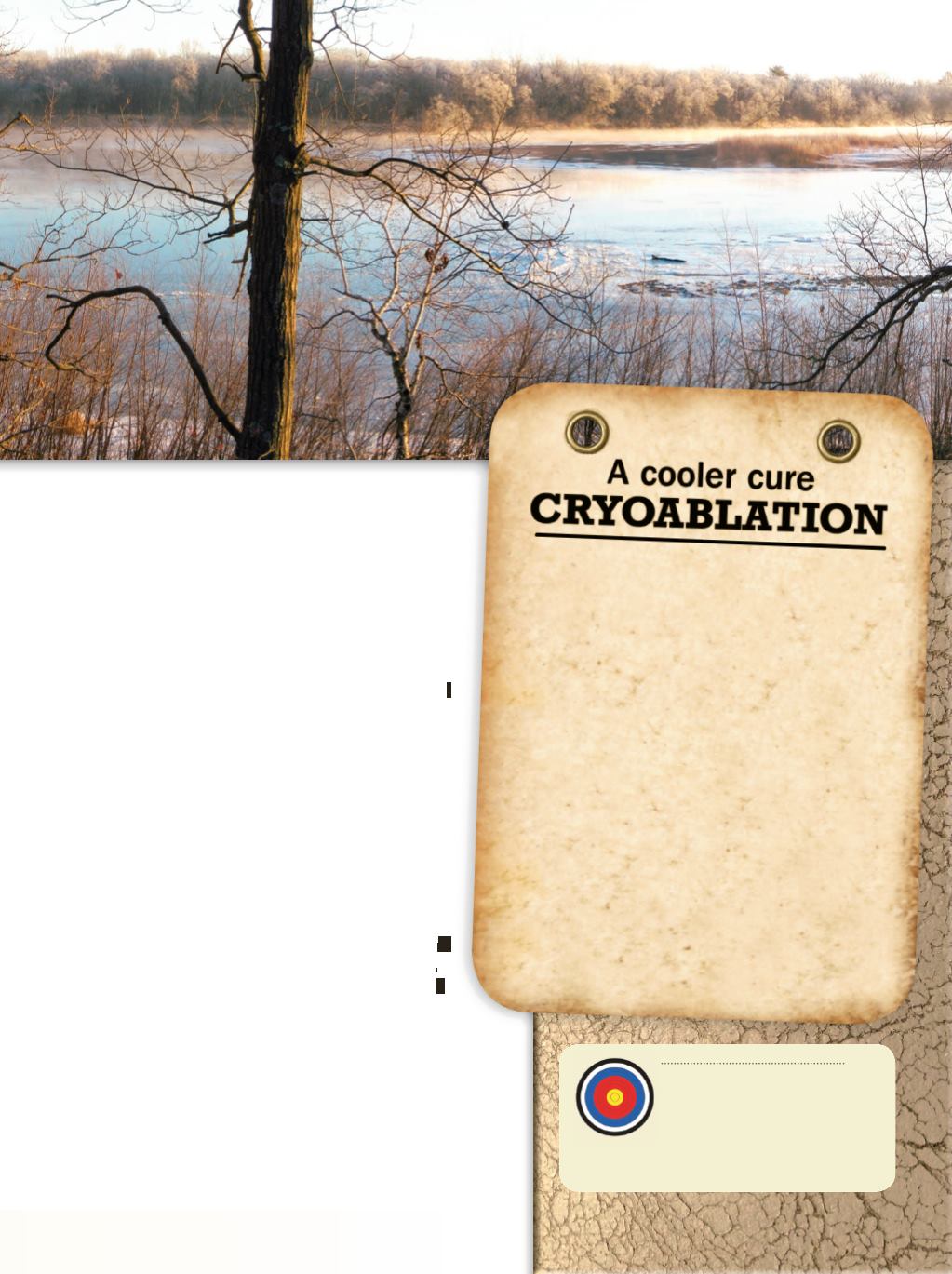
aspirus.org
11
beat irregularly and greatly increases a person’s risk for stroke.
Doctors tried different medications to regulate Lammert’s
heartbeat, but the medicine did not put his heart in regular
rhythm. Lammert also underwent a couple cardioversions,
a treatment that uses electricity to shock the heart back into
rhythm.
The first cardioversion worked for about a day before
Lammert’s heart fell back out of rhythm, and a later attempt
didn’t work at all. At this point, his heart was nearly always out
of rhythm. Something else needed to be done.
Relief at last
Following the final failed cardioversion, Lammert
underwent a series of tests to map out his veins and detect
the faulty electrical sites in his heart. In late December 2011,
he underwent a cryoablation, which at the time was a new
procedure. During cryoablation, doctors insert a catheter in
the groin and guide a balloon to the heart. Once in place, the
balloon is inflated and cooled to freeze the heart tissue that
causes the irregular heartbeat.
“I was in the hospital for a couple days and back to work the
following week,” Lammert said. “My heart hasn’t gone out of
rhythm since the procedure, and it’s like I have a new lease on
life.”
Within three months of the cryoablation, Lammert was off
the various medications he had been taking for years. Now he
bikes hundreds of miles in the summer and is able to enjoy bow
hunting again.
“For the first couple months I would periodically check my
pulse out of habit to make sure I was OK, but after that I began
to live again,” he said. “Now I don’t have to have my heart
concern me all the time.”
TARGETING KNOWLEDGE?
For more information on atrial
fibrillation or treatments for the
condition, go to
or call the Aspirus A-Fib Clinic at
715.847.2040
.
Cryoablation is a nonsurgical, minimally invasive
procedure that ablates, or scars, heart tissue at
the source of erratic electrical signals that cause
an irregular heartbeat. During the procedure, an
electrophysiologist (heart rhythm doctor) guides a
balloon to the heart through a catheter via a small
incision in the groin.
Once the balloon is in place, it is inflated with a
coolant that freezes faulty tissue and restores the
heart to normal rhythm. Rather than using heat,
this unique approach freezes the heart tissue,
which can lead to less disruption of the lining of the
heart chamber and allows for a much larger area of
heart tissue to be ablated at one time.
It is proven to be a safe and effective treatment
for atrial fibrillation (a-fib), the most common
and one of the most undertreated heart rhythm
disorders in America. Approximately 3 million
Americans are estimated to have the disease, and
about 40 percent don’t exhibit symptoms and may
not know they have it.


